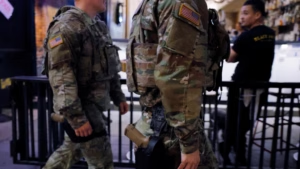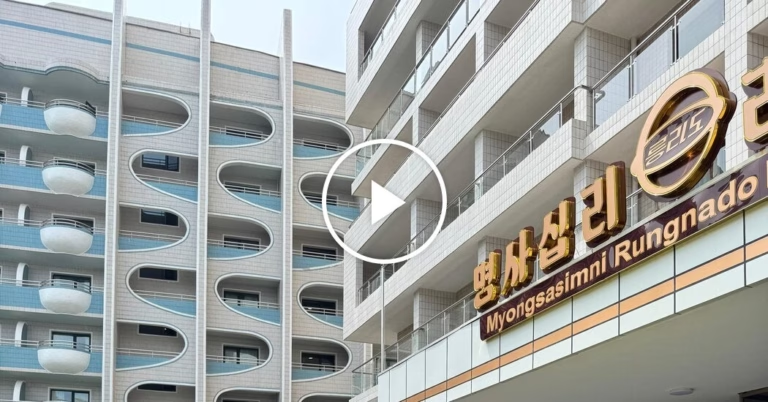Central American countries have traditionally accepted their own nationals deported from the United States. However, under the Trump administration’s current policy, these countries are also being urged to accept people from other regions worldwide.
The measures taken for these deportations—moving hundreds of migrants to undisclosed destinations by air and then busing them to isolated shelters—have shifted attention towards countries like Panama and Costa Rica, highlighting how Trump’s immigration crackdown is impacting beyond the U.S. borders.
While the number of migrants from elsewhere deported to Central America remains small and uncertain whether it will increase, regional leaders mostly claim to cooperate with the U.S. or downplay the significance of these deportations. However, analysts warn that these leaders may eventually be pushed to their limits due to threats of tariffs, as they have been backed into a corner.
According to Christopher Sabatini, a senior research fellow for Latin America at Chatham House in London, these leaders have no power to resist and have witnessed the consequences of defiance—sanctions against diplomatic personnel, visa restrictions, and tariffs—in the example of Colombia’s President Petro.
This month, the Trump administration sent three military planes carrying roughly 300 migrants, predominantly from Asia and the Middle East, to Panama. Subsequently, a flight with 135 people, nearly half of whom were children and included individuals from China, Central Asia, and Eastern Europe, arrived in Costa Rica.
These migrants, who the American authorities claim crossed the southern border unlawfully, are to remain in the custody of the local authorities pending their return to their home countries or securing asylum elsewhere.
Analysts suggest that relocating migrants to other countries helps to alleviate overcrowding in U.S. detention facilities and removes individuals from nations like China, Afghanistan, and Iran — where there are no diplomatic relations with the United States — making deportations particularly challenging.
Additionally, this approach allows the United States to bypass international legal obligations to provide individuals facing life-threatening conditions in their home countries the opportunity to seek asylum. Swift deportations also help the administration avoid another obstacle Trump faced in his first term: U.S. authorities are not permitted to hold children in detention for more than 20 days, regardless of whether they are with their parents. The majority of migrants deported to Central America so far have been families with children.
Publicly, leaders in Central America deny claims that they are being coerced into accepting migrants. In Panama, officials describe themselves as fully cooperating on migration issues, following a recent surge that destabilized the region. Costa Rica, on the other hand, downplays its decision to accept migrants from distant countries, portraying it as a one-time request from the U.S. government that affects a negligible number of people.
President Rodrigo Chaves of Costa Rica was candid about his government’s reason for accepting the migrants: the desire to avoid economic reprisals from the United States. Analysts predict that increasingly, more countries in the region will accept deportees from other countries. Officials in El Salvador and Guatemala have already expressed their willingness.
“The biggest problem facing regional governments willing to do Trump’s deportation business is that they must walk the tightrope,” said John Feeley, a former U.S. ambassador to Panama. They need to appear as “humanitarian, rule-of-law societies,” while avoiding the appearance of being “cruel henchmen” of the Trump administration.
Panama and Costa Rica have stated that, in addition to food, clean water, and medical care, migrants are being given the opportunity to apply for asylum with the assistance of United Nations agencies. Both countries emphasize that they are not returning migrants to countries where they claim to face grave danger.
Panamanian officials also deny any coercion or quid pro quo, emphasizing that their agreement to accept U.S. deportees is part of a broader agreement made last summer to collaborate on curbing migration, specifically focusing on the Darién Gap. They argue that under the context of immigration, the government has broader powers to detain individuals while their migration status is being resolved, countering claims that such detentions are unlawful under Panamanian law.
However, the government may face pushback. Images showcasing distressed migrants, like one from Iran pressed against a hotel window in Panama City, have brought Panama under the spotlight.
Costa Rica faced similar scrutiny when its ombudsman’s office released a report stating that the migrants deported from the United States arrived in a state of visible distress and did not even know which country they were in.
Analysts question whether these Central American countries are receiving adequate compensation for their cooperation with the new U.S
Source: https://www.nytimes.com/2025/02/24/world/americas/central-america-panama-trump-deportation-migrants.html






